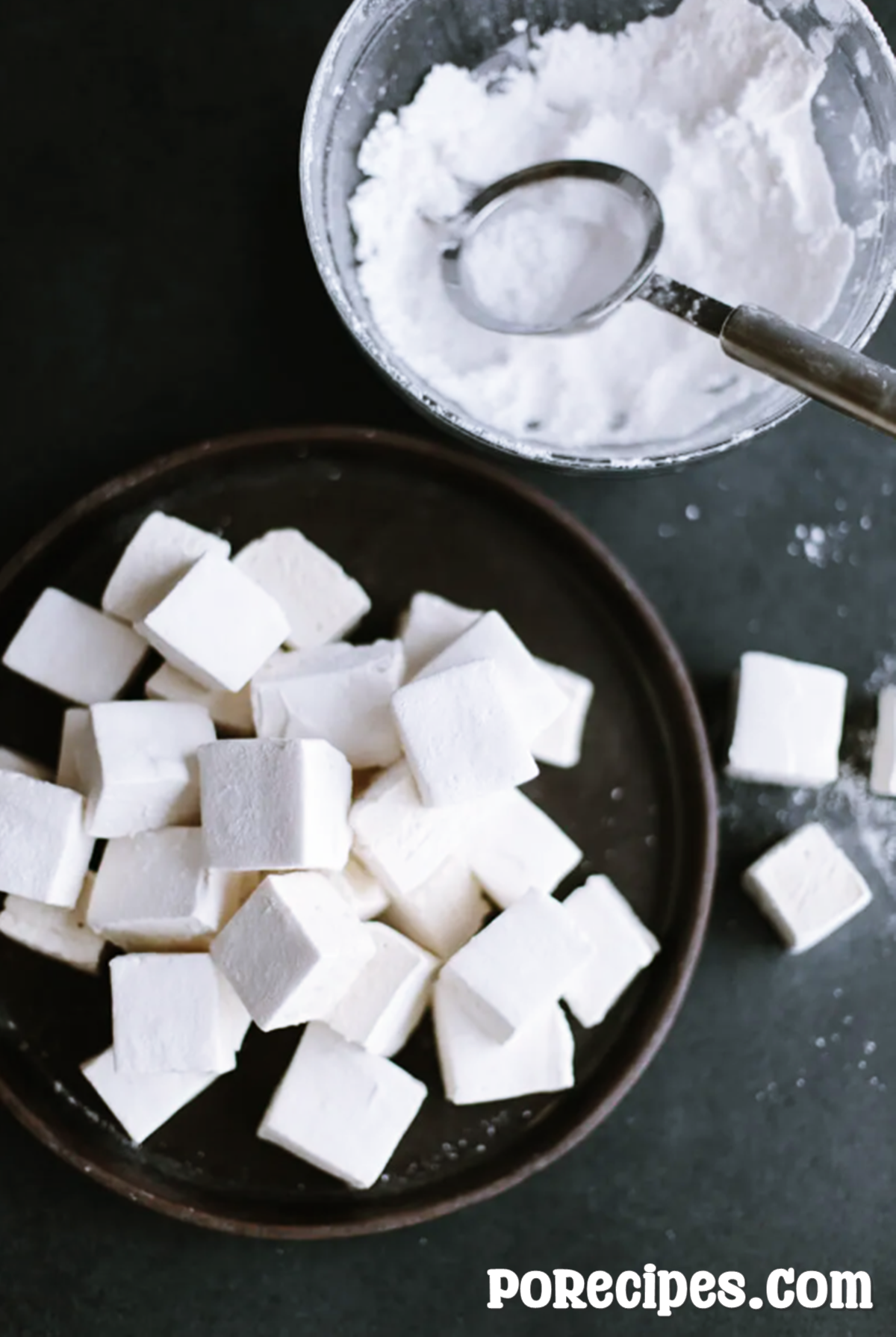You know that, instead of corn syrup, healthier homemade marshmallows are made using honey or maple syrup and premium, grass-fed gelatin. They adhere to the paleo diet and are devoid of gluten and maize. This delectable delicacy is ideal for any occasion, including the holidays.

What are marshmallows made of?
When it comes to making homemade marshmallows, there are two key ingredients – gelatin and sugar. As someone who prioritizes quality ingredients, I always opt for Vital Proteins gelatin. Their gelatin is sourced from pasture-raised, grass-fed animals and is non-GMO and gluten-free. Plus, gelatin has plenty of health benefits, so I try to incorporate it into recipes whenever possible, such as these marshmallows, panna cotta, or coconut yogurt.
Now, let's talk about the sweet stuff. For this recipe, you'll need one cup of either honey, maple syrup, or a combination of both. In the video demonstration below, I use a full cup of honey, but if I had both honey and maple syrup on hand, I would go for a 50/50 split. Unfortunately, I had just used up all of my maple syrup on another recipe, so honey it was. To prevent the marshmallows from becoming sticky, traditional recipes use a combination of powdered sugar and cornstarch.
However, in this recipe, I opt for a blend of organic powdered sugar and arrowroot powder. You can use all arrowroot powder or all organic powdered sugar if you prefer – it's completely up to you. So get ready to whip up some fluffy, delectable homemade marshmallows that will take your game to the next level!


Tips for Homemade Marshmallows
Making homemade marshmallows is an easy process, but there are a few things to keep in mind if you're new to the marshmallow-making game. As for me, I have a few tips that can help make your experience a success. First, when heating your sugar and water mixture, it's best to stir it for the first minute only. After that, leave it alone. Stirring can actually create bubbles and cause it to boil over.
And speaking of boiling over, keep a close eye on the mixture, as it can get too hot and boil over. To reach the "soft ball" stage, you'll need to heat the sugar to 240 degrees Fahrenheit, but be aware that it may get up to 220 degrees quickly before taking a bit longer to nudge up to 240. Don’t worry, this is normal. Secondly, when beating your marshmallow fluff, be careful not to over-beat it.
Over-beating allows it to cool too much, and it almost immediately turns into a taffy-like consistency. This means you may be eating marshmallow fluff straight from the bowl, as it's impossible to get it out. I may have let my marshmallow fluff go for about a minute longer than I should have. This was due to multi-tasking, and the resulting marshmallow fluff was a bit thicker than usual. But no matter how thick it is, it's going to be super tacky, so be sure to have a hand towel nearby.


You will likely get your fingers sticky and if you are anything like me, you may get marshmallows on your body somehow (and maybe even in your hair). It's a talent, really. Now that you know how to make healthy and delicious homemade marshmallows, the next step is figuring out what to do with them. One thing to keep in mind is that because these marshmallows are made with fresh ingredients and no preservatives, they're best eaten within a day or two.
But trust me; they won't last that long anyway. Just store them in a sealed container on the counter, and whatever you do, don't refrigerate them! So, what can you do with these beautiful, fluffy treats? The possibilities are endless. Or you could use them to top a bowl of oatmeal or add some sweetness to your coffee. The possibilities are endless, so get creative and enjoy!

How to Refrigerate Homemade Marshmallows:
It's not recommended to refrigerate homemade marshmallows as the moisture in the fridge can make them sticky and cause them to lose their fluffy texture. Instead, store them in an airtight container at room temperature for up to a week.
How to Freeze Sweet Homemade Marshmallows:
Sweet homemade marshmallows can be frozen for up to three months. To freeze them, place them in an airtight container or freezer bag and make sure to remove as much air as possible. When you're ready to use them, allow them to thaw at room temperature before serving.
How to Reheat Sweet Homemade Marshmallows (If Required):
You might try reheating your lovely handmade marshmallows if they have grown hard or stale. To do this, spread them out on a baking sheet and rehydrate them for a few minutes in a 250°F oven so that they are soft and goopy. Or, you might microwave them for a little period of time, but be cautious not to overcook them because they could easily melt.
FAQs
Can I make my own marshmallows using plain granulated sugar rather than honey or maple syrup?
Sure, you can make marshmallows at home with normal granulated sugar, but the flavor and texture could change.
Conclusion
A tasty and entertaining treat, homemade marshmallows may be used in a variety of ways. Your handmade marshmallows will keep as fresh and fluffy as possible if you adhere to a few basic storage and reheating instructions.





Leave a Reply